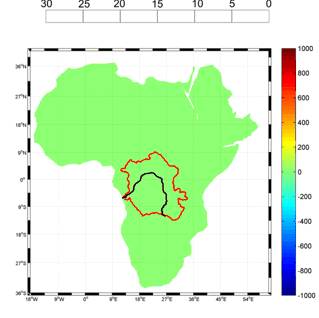
Geologists (e.g. Krenkel 1922; Holmes 1944; Burke 1996) have long recognized the unique ‘basin and swell’ structure of the African continent and adjoining ocean basins. This topography is unique on our planet and is characterized by large-scale extensional features such as the East African Rift, recent widespread magmatic activity, and epeirogeny. These enigmatic surface features have long suggested that the African continent is shaped by significant dynamic forcing originating in the underlying mantle. Recent progress in seismic tomography (Simmons et al., GRL, 2007; GJI 2009) provided the first complete three-dimensional images of the combined thermal and chemical anomalies that characterise the unique mantle structure below the African continent. Utilizing this present-day geodynamic model I reconstructed the late Cenozoic dynamic topography of Africa by carrying out backward-in-time mantle flow simulation.
Naturally, a strong constraint on the Earth’s surface evolution comes from sedimentary basins and margins where a geological record of subsidence and/or uplift is recorded. My current research in this area is focusing on unravelling the long-term tectonic signal in the sedimentary record of African margins. An interesting aspect of this research is focusing on the coupling of mantle to crust and surface processes such as erosion and sedimentation as well as drainage basin evolution, in which a key ingredient is estimates of the changing African paleoclimate. The outcome of this study will refine our understanding of controls on sedimentary basin evolution, such as variation in sedimentary fluxes and the long-term sea level record.
